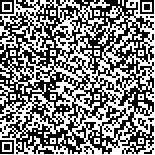| 本文已被:浏览 355次 下载 441次 |

码上扫一扫! |
|
|
| 氩等离子体紫外光A和B辐射属性计算 |
|
王飞1,2,3, 李桓1, Cressault Yann2,3, Teulet Philippe2,3, 杨珂1
|
|
1.天津大学 天津市现代连接技术重点实验室, 天津 300072;2.Université3.de Toulouse, UPS, INPT, LAPLALE, Toulouse 31062, France
|
|
| 摘要: |
| 焊接等离子体释放的紫外光A (315~400 nm)和紫外光B (280~315 nm)是皮肤癌的重要诱因.基于净辐射系数的概念,考虑了连续谱(复合辐射和轫致辐射)和线谱等辐射机制,计算了氩等离子在常压、5 000~25 000 K内的紫外光A,B的辐射属性.结果表明,随着等离子体半径Rp增加,全谱辐射发生强烈的自吸收效应,而紫外光A,B基本无自吸收;当Rp=1 mm时,它们在总谱辐射(35~4 500 nm)的最大的占比分别为6.0%,1.9%,在非真空紫外辐射(200~4 500 nm)的最大的占比为36.3%和5%.为钨极氩弧的紫外光危害性研究提供了理论依据. |
| 关键词: 紫外光 辐射 焊接电弧 皮肤癌 净辐射系数 |
| DOI:10.12073/j.hjxb.2019400174 |
| 分类号:TG403 |
| 基金项目:国家自然科学基金项目(51675375) |
|
| Calculation of radiative properties for argon plasma in ultraviolet A and B |
|
WANG Fei1,2,3, LI Huan1, Cressault Yann2,3, Teulet Philippe2,3, YANG Ke1
|
|
1.Tianjin Key Laboratory of Advanced Joining Technology, Tianjin University, Tianjin 300072, China;2.Laboratoire Plasma et Conversion d’Energie (LAPLACE), UPS, INPT, Université3.de Toulouse, Toulouse 31062, France
|
| Abstract: |
| Exposure to ultraviolet A (315~400 nm) and B (280~315 nm) from welding arcs is an important risk factor for the development of skin cancer. Based on the concept of net emission coefficient, the radiative properties within the ultraviolet A and B ranges are calculated for argon plasma with a radius of Rp in the temperatures 5 000~25 000 K at atmospheric pressure. The various radiative mechanisms, including continuum (recombination and bremsstrahlung) and line radiation, are considered. It is concluded that although the self-absorption effect is prominent for the entire spectrum, it is very weak for the ultraviolet A and B. When Rp=1 mm, the ultraviolet A and B radiations account for at most of 6.0% and 1.9%, respectively. To the entire spectrum (35~4 500 nm) radiation, and account for at most of 36.5% and 5.0% to non-vacuum-ultraviolet (200~4 500 nm) radiation. This study establishes a theoretical basis for the study of the ultraviolet radiation posed by TIG arcs. |
| Key words: ultraviolet radiation welding arcs skin cancer net emission coefficient |